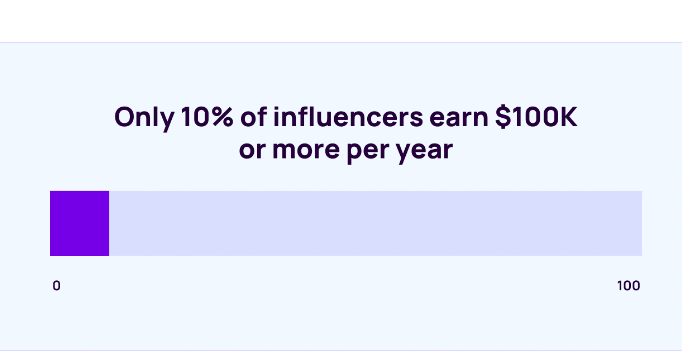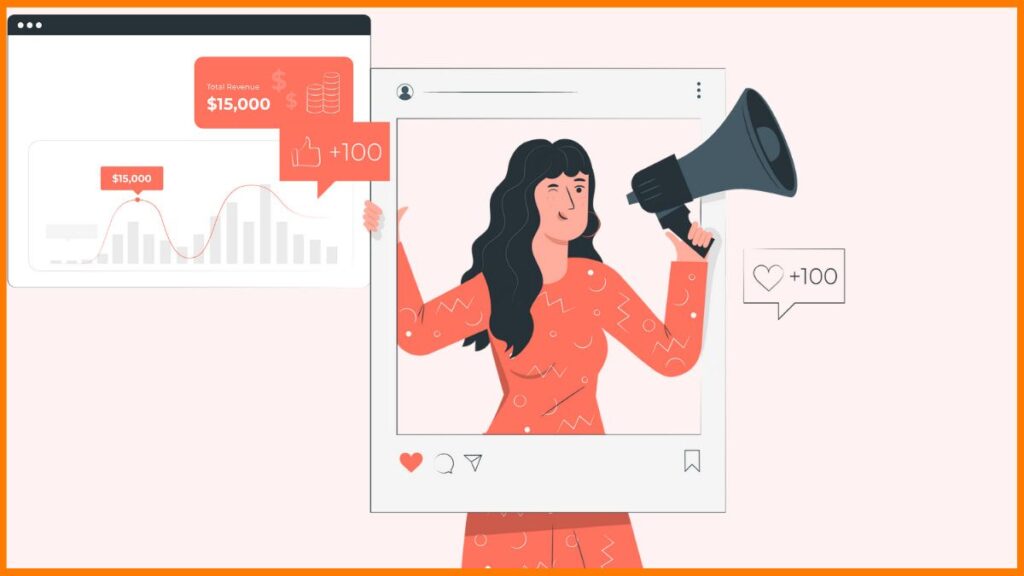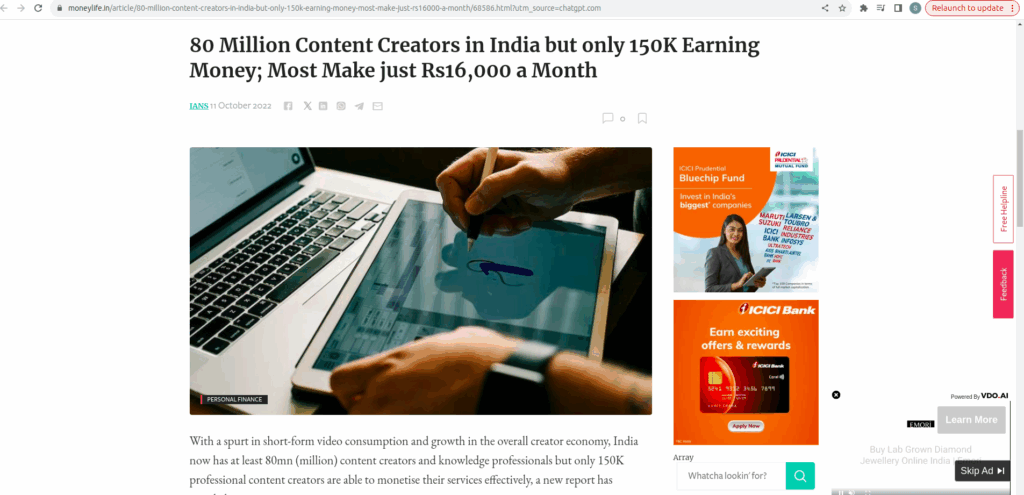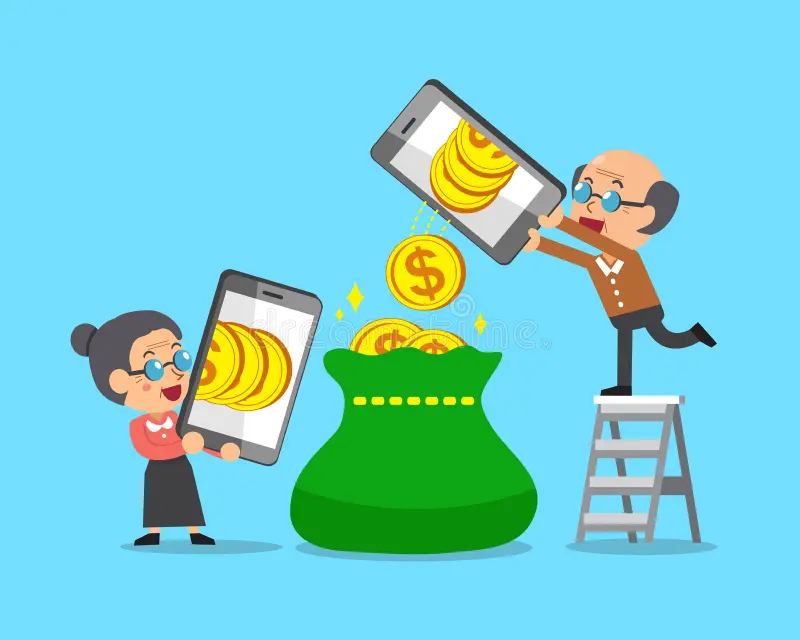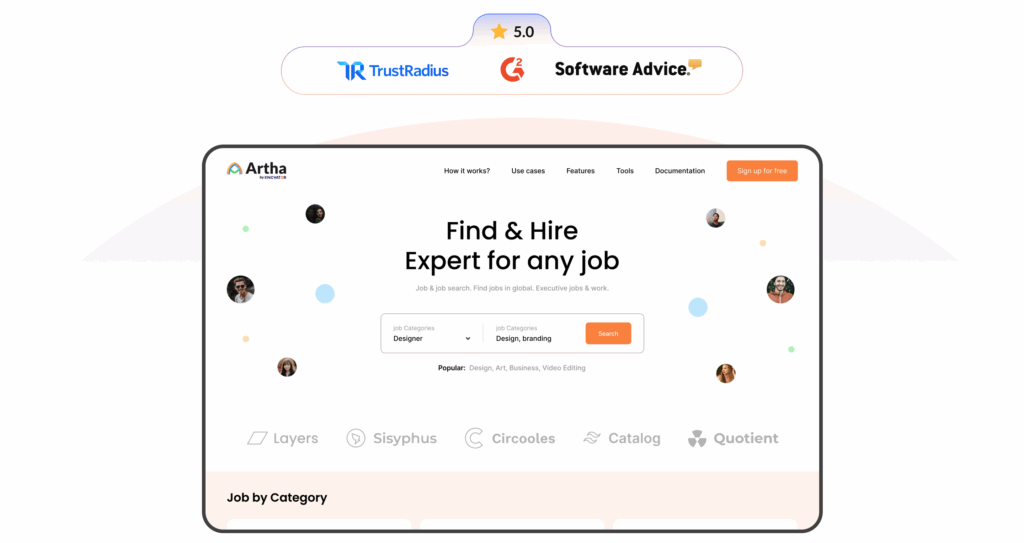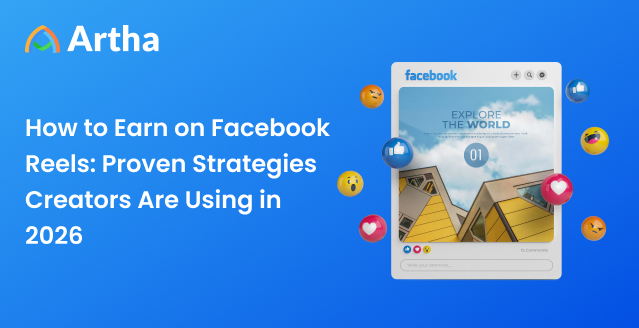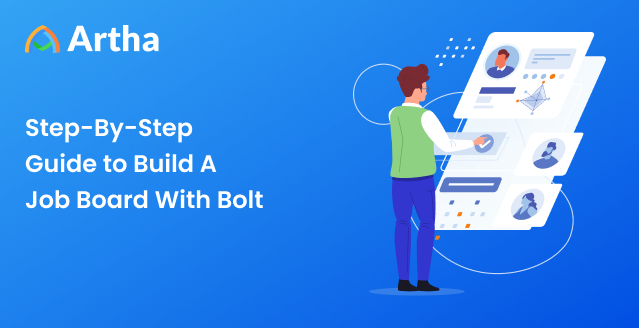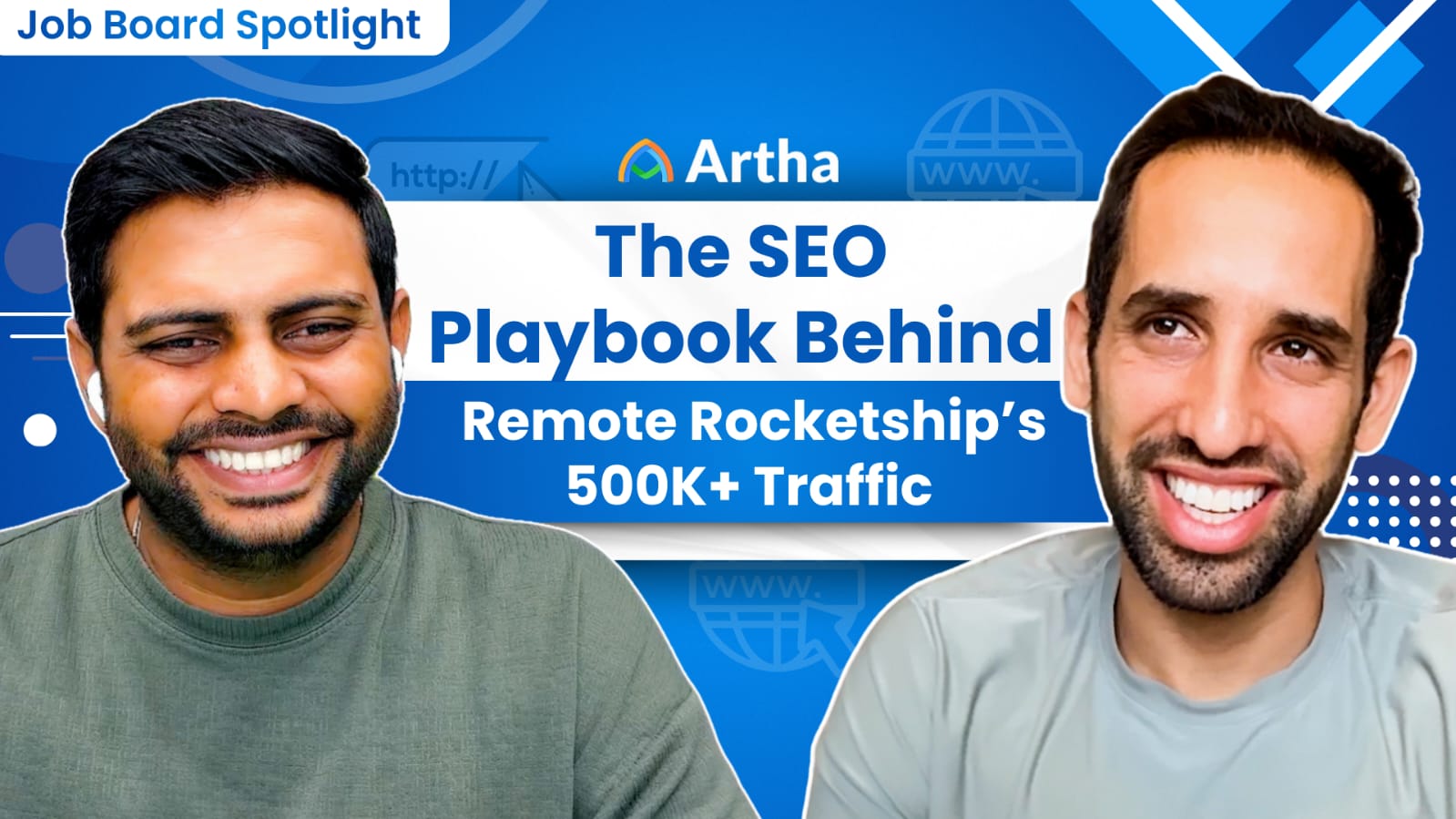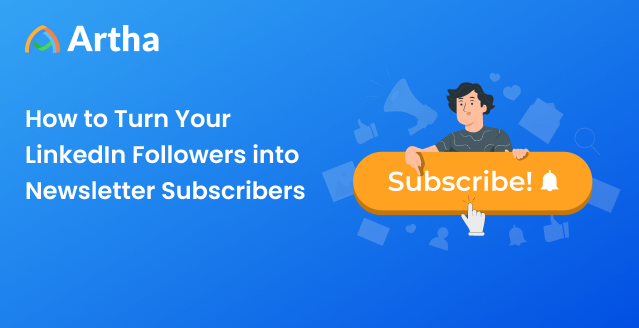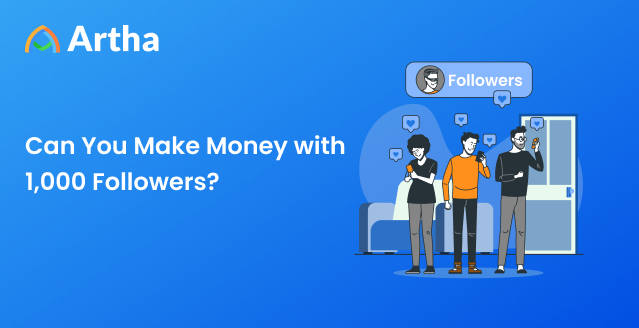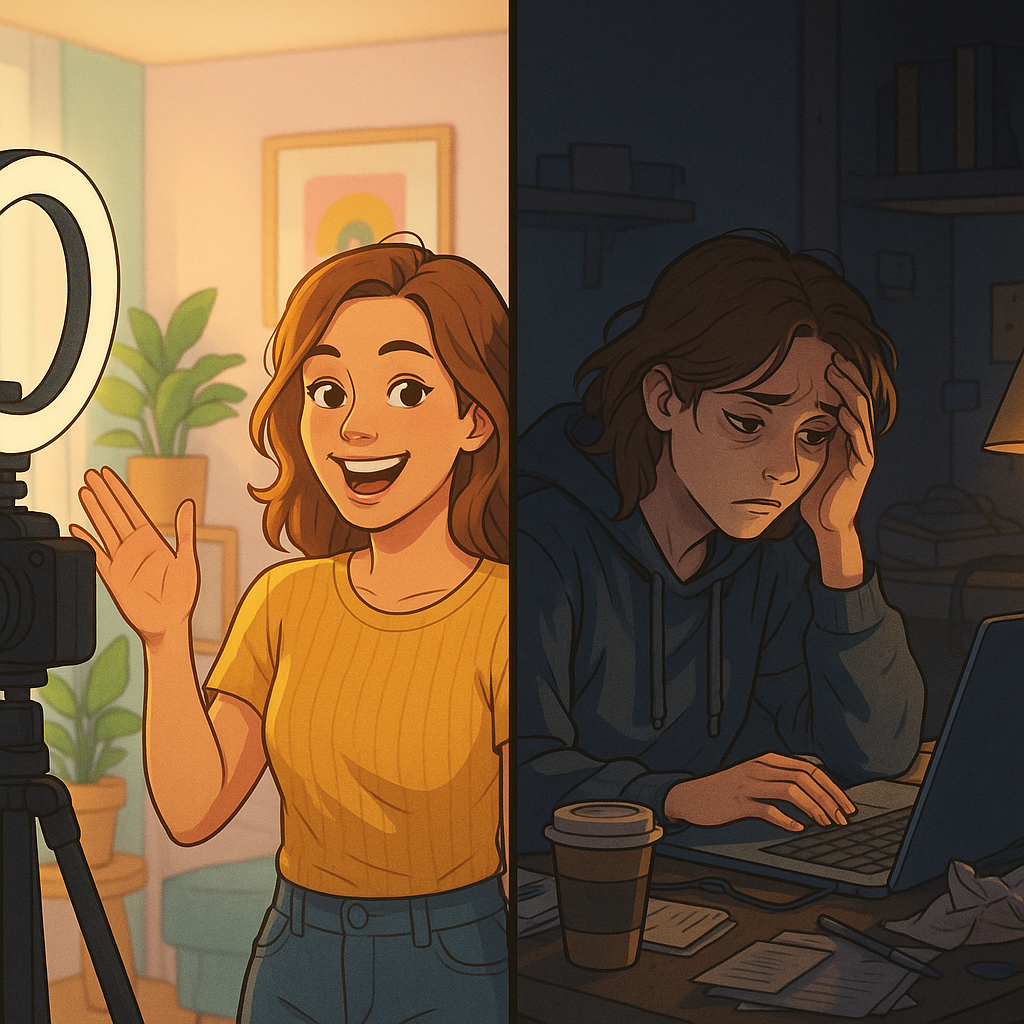
Ditching the 9-to-5 grind to follow your passion and finally be your own boss?
Thanks to the rise of the content creator economy, that dream feels more possible than ever. From YouTubers and Podcasters to TikTokers and niche Newsletter Writers, more people are turning their creativity into careers—on their own terms.
And the numbers back it up.
- As of 2024, over 200 million people around the world identify as creators.
- In the U.S. alone, the creator economy is valued at $250 billion, and it’s projected to hit $480 billion by 2027.
On the surface, it all looks amazing—flexible schedules, creative freedom—but as the iceberg meme suggests, what’s below the surface isn’t nearly as pretty.
The truth? Most creators are still broke, burnt out, or both.
Even 70% of creators say they need support to earn money reliably. That’s not a small group—it’s the majority. So the big question is how creators earn mone
(Have a look at this Linktree Report.)
Because while the internet is packed with flashy “how I made $100K in a month” stories, the reality is much messier.
And no—it’s not because creators lack talent, ideas, or hustle.
They’re trapped in a system that only pays when they’re constantly producing.
- You stop posting? You stop earning.
- You take a break? You fall behind.
- The algorithm? It doesn’t care how many hours you poured into that content.
- Sponsorship deals? Don’t even get us started.
This creates a draining cycle of performance, pressure, and unpredictability.
One week, you land a big brand deal or go viral. The next? Radio silence and unpaid bills.
So it’s time to ask the question most people avoid:
How do creators actually earn money—and how can a little support help them monetize better than traditional methods?
That’s what this blog dives into.
And if you’re tired of chasing likes just to keep the lights on, this might be the shift you’ve been looking for.
2. How Do Creators Earn Money?
You post a reel, reply to some DMs, and boom—you’re making thousands from your couch, right?
Except… that’s not how it works.
Ask any creator who’s been at it for a while, and you’ll hear the same thing:
Creating content is the “easy” part—except even that’s not easy. You’re wearing all the hats: strategist, writer, editor, performer, marketer. But making money online as a creator? That’s the real grind.
Because here’s what most people don’t see:
You pour hours into a post—planning, scripting, editing, tweaking captions, timing it just right—and then… what?
- You hope it performs.
- You hope it reaches the right audience.
- You hope the algorithm doesn’t throw it into the void.
But here’s the kicker—even when it does land, the paycheck still isn’t guaranteed.
You might get the likes and engagement… and still be broke.
So let’s break down the main creator income streams—and why so many are still struggling to cover their basic bills.
Brand Sponsorships
This is the one everyone talks about. The one we’re all supposed to aim for.
You know—“Just land a few brand deals and you’re set.”
Except no one tells you what it actually takes to get there… or what it costs once you do.
Because beyond just having followers and reach, there’s a whole unspoken checklist you’re expected to hit:
→ Enough watch hours
→ Engagement above industry average
→ The right niche
→ Aesthetic on point
→ Consistent posting
→ Oh, and maybe tag the brand every third post just in case they notice you
And that’s all before they even reply to your email.
If a brand does finally slide into your inbox?
That’s when the real work starts.
- You get a five-page creative brief.
- You tweak your content again and again to match their voice.
- You send drafts, wait days for feedback, revise some more.
- Sometimes 20 scripts still “aren’t quite right.
And if the brand isn’t one you align with? That’s a whole new dilemma.
- Will they pay on time?
- Will they ghost after the post?
- Will they reuse your content without permission six months later?
For most mid-tier creators, this feels like a constant balancing act between pleasing brands and protecting your audience. And sometimes, despite the effort, you’re still underpaid, underrecognized, and overworked.
Yes, sponsorships are a key creator monetization tool—but they’re far from stable, scalable, or stress-free.
Ad Revenue
For creators, this feels like the most straightforward way to earn—put out content, rack up views, and let the platform do the rest.
But here’s the reality: the payouts are shockingly low unless your content consistently hits high six-figure views or more. We’re talking tens of thousands of impressions to make enough to cover groceries.
Also Read: The Top 6 Mistakes Blocking Creators Income
Let’s say your video gets 100,000 views (which is already a big win for most creators). That might earn you $50. Maybe $100 if you’re lucky.
And that’s assuming
- The platform decides to monetize it in the first place
- It doesn’t get demonetized for music, language, or content
- Your audience is from countries with high CPM rates
- You’ve already crossed the monetization thresholds (hello, 4,000 watch hours and 1K subs)
- You can go viral and still barely cover lunch.
- And that’s before taxes, fees, and any content costs.
Unless you’re operating at scale, ad revenue alone just doesn’t cut it. It might help you buy groceries, but it’s not covering rent, health insurance, or saving for the future.
Affiliate Marketing
This one’s sold as the “easy win.”
Just drop a few links, recommend a product, and make passive income while you sleep.
In theory? Sounds amazing.
In practice? It’s a long, uphill climb.
Here’s what you need to actually make affiliate marketing work:
- A loyal audience that trusts your recommendations
- The right niche with high-converting products
- Constant content that subtly plugs those products
- Strategic placement, calls to action, tracking links, and platforms that don’t bury them
And the commission? Let’s just say, it’s rarely impressive. You might earn $2–$5 per sale on most platforms—unless you’re pushing high-ticket items or working directly with brands.
You end up writing long posts, filming tutorials, sharing endless discount codes… just to earn a few dollars here and there.
And if your audience doesn’t click? You earn nothing.
Even if you know the product is great, even if you worked hard to promote it—no conversions, no cash.
So yes, affiliate marketing can be a revenue stream. But it’s far from “passive,” and definitely not reliable unless you’ve got a big, highly engaged following—and a lot of patience.
3. The Real Creator Income Challenges
So, after breaking down the main income streams, here’s what’s obvious: these ways creators try to earn money come with some big, painful challenges.
Unpredictable cash flow. One month, you might score a brand deal or a viral video that pays the rent. The next? Crickets. It’s a rollercoaster where you never quite know when the next paycheck will hit.
Total dependence on platforms. Your income rides on algorithms you don’t control. One small change and your reach tanks. Suddenly, all those hours you spent don’t even translate into views, let alone cash.
Burnout is real. To keep money flowing, creators have to juggle multiple platforms, chase brand deals, promote affiliate products, launch merch, and somehow still create killer content—all without a real break. It’s exhausting.
No true passive income. Almost every dollar earned requires active effort. If you pause, the money stops. There’s no “set it and forget it” here.
Most creators aren’t just hustling—they’re stuck in a system that demands constant output with no safety net.
That’s why so many say they need a better way to monetize, one that’s consistent, less dependent on ever-changing social media trends, and actually sustainable.
4. What the Stats Say About Creator Income
So, after looking at the challenges creators face, let’s talk numbers—because the stats tell a story most people don’t hear.
Here’s the hard truth:
- Small creators (under 10K followers): The majority earn less than $500 per month. In fact, 51% of creators make under $500 monthly, with 31.8% earning less than $250.
- Mid-tier creators (10K–100K followers): They often juggle multiple income streams to make ends meet. While some earn between $1,000 and $2,000 monthly, many still struggle to cover basic expenses.
- Full-time creators: Only about 4% earn over $10,000 per month.
- Top-tier creators (over 1 million followers): Less than 1% of creators reach this level, and they can earn between $2,500 and $65,000 per month.
- In India, with over 80 million content creators, only about 150,000 are effectively monetizing their content, earning between ₹16,000 and ₹200,000 per month.
5. Why 70% of Creators Want Income Support (Without Losing Their Brand)
Let’s be real—when we talk about “income support,” it’s not about asking for charity or handouts. It’s about something way more meaningful: A steady paycheck that doesn’t vanish if the algorithm changes or a brand deal falls through. Earning without the pressure to post every single day just to keep the lights on. Keeping control over your creative voice and your audience’s trust, without having to push products or messages that don’t feel like “you.”
Because here’s the truth—70% of creators say they want income support, but only if it doesn’t come at the cost of their brand integrity. We’re not looking to “sell out” or lose what makes us unique. We want ways to earn the respect for our work and our connection with followers. That’s why so many creators feel stuck in a tough spot: the grind of constant content creation just to survive versus risking audience trust by chasing every deal that comes their way.
What creators truly need are tools and opportunities that provide real, reliable income without forcing us to compromise who we are or what we stand for. In other words, income support that feels like a partnership, not a transaction.
6. The Overlooked Option: Job Boards as Passive Income
After everything—brand deals, affiliate links, ad revenue, merch—it’s clear that most income sources for creators come with stress, unpredictability, and endless effort. But here’s one route that’s quietly changing the game: AI Job Board Software
We’re talking about creator-led job boards—customized to the creator’s niche, aligned with their brand, and, most importantly, designed to generate passive income.
What they need is what they already have: a niche audience and a trusted voice in their space. Whether they talk about freelancing, tech, marketing, design, or remote work, these audiences are actively looking for opportunities.
It’s all powered behind the scenes by AI, ensuring fresh content, matching relevance, and giving creators more time to focus on what they do best: creating.
And the beauty?
It earns passively.
Even if creators take a break from posting or go offline for a while, the job board keeps working in the background, providing value to their community and generating revenue without demanding constant input.
This is where the future of the creator economy is headed.
That’s where a smart, AI-backed job board fits in perfectly.
With the help of automation and intelligent backfilling, creators can:
- Launch a branded job board in minutes.
- Auto-populate it with relevant, high-quality job listings.
- Monetize every application—without lifting a finger.
- No manual updates. No tech headaches. No outreach needed.
It runs quietly in the background—no content grind, no daily maintenance. Just a smart, low-effort way to offer real value to followers while building an income stream that doesn’t depend on algorithms or daily engagement.
- It’s not a hack. It’s not a trend.
- It’s a real, scalable option that solves two big problems at once:
- It helps creators earn without burning out.
- It helps their audience find quality opportunities—without leaving the creator’s ecosystem.
- In a world where creators are burned out from juggling too many things, this is a model that actually works with them—not against them.
- Passive, brand-aligned, automated.
- Not a gimmick. Just smart business—powered by AI.
Conclusion
The creator economy is booming—but beneath the surface, creators are facing real income challenges. Despite the massive growth in the industry, most creators still struggle with inconsistent earnings, burnout, and a system that demands constant output for unpredictable returns.
So how much do creators really make? For many, it’s not enough—and that’s exactly why 70% are actively looking for more reliable income support.
If the future of the internet is creator-driven, then it’s time to build systems that actually support creators—through scalable, sustainable monetization tools, passive income streams, and less dependence on platform algorithms.
Because the next era of the creator economy shouldn’t just be about content—it should be about control, stability, and long-term growth.

